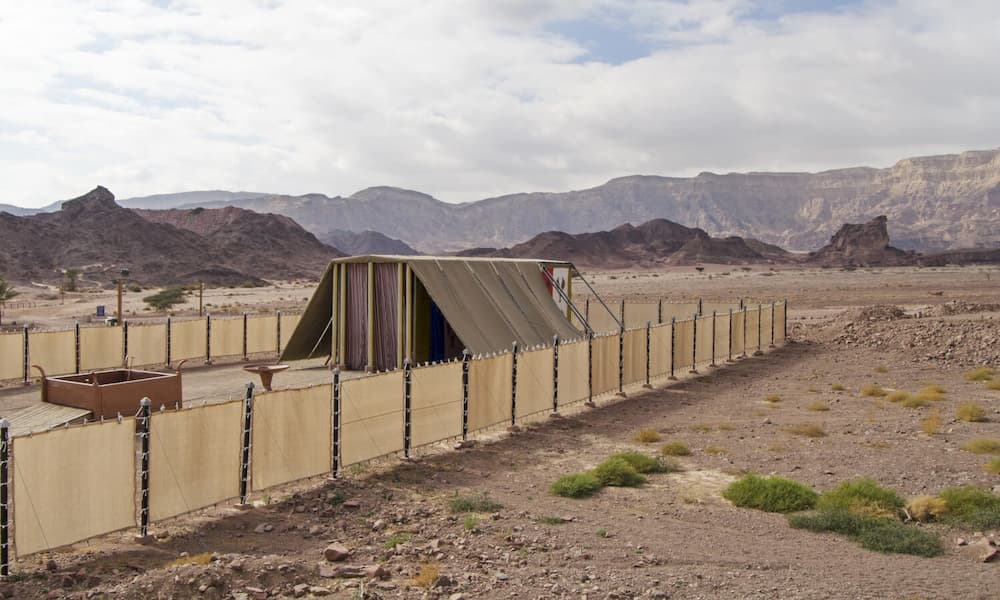We are taught to believe that the text of the Torah is extremely economic and succinct, and that Torah and redundancy are mutually exclusive. We therefore cannot help but wonder why the Torah is so verbose when describing the construction of the Tabernacle.
To answer this question, I think we should consider the phenomenon of scrupulosity, or religious OCD.
R. Dr. Avraham Twersky writes in his introduction to Religious Compulsions and Fears, a Guide to Treatment, by Dr. Avigdor Bonchek:
…when a person becomes overly obsessed, to the point that he becomes neurotic and is unable to function properly, it may be a sign of OCD…
Dr. Bonchek himself speaks of the following elements in religious OCD: washing and cleaning, checking, repeating, ordering, and hoarding. He says that a compulsive person might receive a ruling from an authoritative rabbi yet be unable or unwilling to abide by it. This person, says Dr. Bonchek, “is not free enough, not flexible enough.”
What if you discover Judaism but are not fully familiar with Halakha? In her fascinating memoir, Devil in the Details, Jennifer Traig opens for us a window into that world (p. 31):
I liked scrupulosity because it got right to the point. It’s the purest form of OCD. In a sense, all OCD is religious, of course; it’s a disease of ceremony and ritual… OCD certainly looks like religious practice: we perform our compulsions with exacting devotion, we repeat incantations, and you know what cleanliness is next to. But with scrupulosity, the rituals truly are rituals, the incantations are prayers. The stakes, more-over, are infinitely higher. With other forms of OCD, you fear that if you don’t perform your compulsions, your father might get sick; with scrupulosity, you fear you’ll cause a global spiritual Armageddon, or at the very least, damn yourself to hell for all eternity.
Traig drove her family to the brink of insanity because her knowledge of Judaism was limited, and she blurred the line between Jewish Law and her own scrupulosity (that was before Rabbi Google was ordained). Here is, for example, her guide to handwashing:
- First, you need to get some water going.
- Next, choose your poison. What kind of soap is for you?
- Rub your hands together vigorously and scrub, scrub, scrub.
- I don’t know if water is clean. What if water isn’t clean? What if water just makes you dirtier?
- You’ll wash and wash and wash, but you’ll never be safe.
- Okay, try not to think about it. Let’s just say water is clean and move on.
- But what it it’s not clean?
- We’re moving on. The next part is tricky. Your hands are clean-but they’re wet. How to get them dry without getting them dirty again? The air-try technique is best. If you touch something, or if for some reason you think you maybe touched something, go back to Step 1. Yes, let’s go back to Step 1 just to be safe.
Compare this guide with the way some of my friends in Yeshivah would wash their hands for bread, and consider that for them eating was torture because of all the rituals performed before, during, and after eating:
- Find the right vessel.
- Fill it until it overflows.
- Dry the handles, so your hands will not become impure from the water on the handles.
- Now dry your hands from touching the handles.
- Hold the vessel in your right hand and pass it to the left hand.
- Wait! Do it again! The right hand is more important than the left, and it is disrespectful for the right to serve the left. You should place the vessel on the counter, then pick it up using the left hand.
- Wash the right hand three times.
- Place the vessel on the counter.
- Pick it up with your right hand.
- Wash your left hand three times.
- Lift your hands up so the water does not drip from the wrist down and renders your palms impure.
- Dry your hands.
Congratulations! You are now ready to wash your hands for bread. Seriously. This whole ritual was performed just to prepare your hands for washing, since you cannot perform the actual sacred ritual while your hands are impure. There is only one little problem. Now that your hands are pure, you cannot say the blessing after you wash the second time, because the washing is unnecessary. Solution? Bend down and touch your shoe. Now your impure hands are ready for the wash!
- Repeat steps 1-11.
- Say the blessing.
- Dry your hands.
This is a true description of how some of my friends used to wash hands before the meal, a process which would take close to ten minutes. Some of them would wash their hands three times, and we didn’t even start talking about rituals of counting letters, words, verses, and days, or of obsessive and even abrasive cleaning for purity purposes.
I believe that the Torah wanted to prevent us from turning our religious life into a compulsive, fear-infused string of uncontrollable actions, but instead of depriving us completely of the joy of OCD, the details of the tabernacle were handed to us. You want to obsess about something? Here is your chance — the Temple and the Tabernacle. Everything that has to do with these buildings is described with such detail and discussed so meticulously to satisfy our need for this type of behavior. The laws of the Temple were practiced by a select group of people, the priests, and most people would visit the Temple only during the pilgrimage holidays. During the rest of the year, the Torah wants us to guide our lives with love and compassion, with light in our hearts and not with darkness and fear. In that spirit, the Torah laws which are not temple-related are much less detailed.
The Torah is a codex of joy and love. The famous golden rule, as well as the Ten Commandments, is about treating other human beings with respect and dignity, about loving ourselves and acknowledging our potential, and about finding an intimate, spiritual connection to God. The laws of the Torah are wise and they accommodate and help the human condition, but if the joy we derive from performing a Mitzvah is based on the comfort of repeating a familiar pattern, on habit alone, without a deeper sensation which has the power to transform and inspire us, something is missing. When that happens, we should stop for a moment, reflect on our actions and start working on the construction of a spiritual temple in our heart, alongside our practical observance.








Ohr HaChaim Yomi – Emor